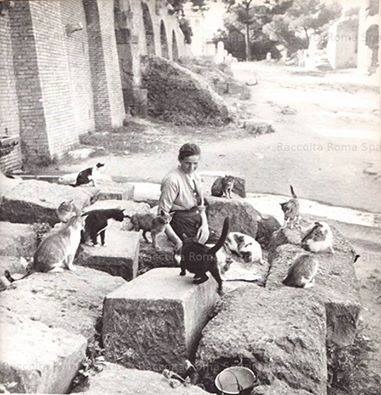The cat was a sacred animal in ancient Egypt, and its status has remained unchanged in many countries (e.g., Italy, Turkey). Examples of this can be found in Rome and Istanbul.
“The cats of Rome are literary cats: they gather only in the most celebrated places. At the Pantheon and the Forum, unconcerned with the tourists, those noble musicians perform their concerts. They are poor and scruffy, and they have a tough time, but they will always remain the cats of the Capital.”
These words by Gianni Rodari (1920–1980), an Italian writer, describe the cats of Rome. Other Italian writers have also dedicated parts of their works to felines, exploring the relationship between Rome and its beloved cats.
One of the most famous types of cat is the tabby, one of the most widespread breeds in the world, often cited in the works of illustrious authors. For example, in the poem “Er gatto e er cane” by Trilussa (1871–1950), it appears right from the first verse: “A tabby cat said to a beggar…”
This is just one example of how cats have filled the pages of writers’ works.
Since the time of the Roman emperors, the cat has held a special place: it was considered a sacred animal, a loyal companion both in earthly life and the afterlife. For this reason, many surnames in Ancient Rome were derived from the word cattus, which means “cat” in Latin. The bond between Rome and its cats stretches back millennia.
In modern Rome, a long-standing dynasty of cats continues to thrive, choosing the city’s most beautiful and historically significant sites as their homes: the Torre Argentina, where Julius Caesar was assassinated, the Colosseum, and even cemeteries—such as the large colony of cats in the Verano Cemetery. Today, there are more than 5,000 registered feline colonies in the capital, some of which can be found in surprising places, like “La Sapienza” University.
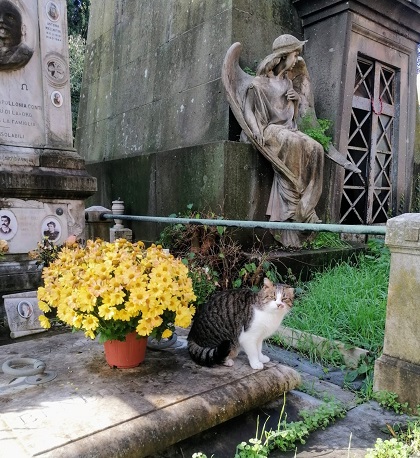
An interesting fact is the origin of the term gattara (a congregation of cats), which was coined in Rome to refer to the place designated by Pope Innocent for collecting stray cats. It was primarily women who took care of these cats, and hence, these women were called gattare. There has always been a strong connection between women and cats, perhaps because the cat was seen as a symbol of independence (something to be opposed in a patriarchal society), to the point that women who kept cats as pets were more likely to be accused of witchcraft.
A legendary episode involves Anna Magnani (Academy Award -winner Italian actress 1908-1973) considered the greatest gattara in Rome, who would personally go to Torre Argentina to feed the cats. Once, someone asked her, “Signora Magnani, why do you go yourself? Why not send your maid?” Her response was, “No, they must see Magnani feeding the cats, not the maid.”
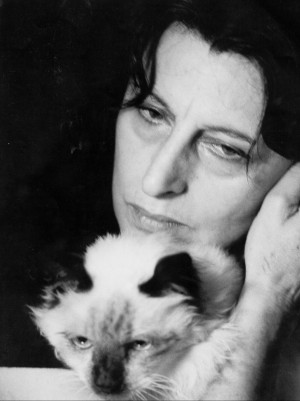
According to some writers and commentators, there is a special bond between cats and Rome, and between cats and Romans. The cat resembles the Roman more than any other animal because “it is sly, intelligent, clever, and always manages to get by.” Thus, it is said that the character of the Roman is reflected in the character of the cat. In Italy, February 17th is celebrated as National Cat Day.
This is the story of the cats in Rome, but there is also a sister city: Istanbul.
The bond between Istanbul and cats dates back to the Byzantine era (Byzantine Empire, also referred to as the Eastern Roman Empire), was the continuation of the Roman Empire centered in Constantinople -Istanbul now). It is said that cats are the true masters of the city. They are everywhere: on the streets, in shops and cafés, inside mosques, in markets, at hotel entrances, and among the tables of restaurants. They are an integral part of the city. In every neighborhood, bowls of water and food are provided for them. The cats live in freedom; they are neither domestic nor wild, and the fascinating thing is that they choose where to live.
Take, for example, the famous cat Tombili. Tombili, which in Turkish means “chubby animal,” was a street cat who became internationally famous thanks to a photo that captured her in a distinctive pose—lying on her back with her front paws resting as if they were arms. A statue of this cat exists in the Ziverbey neighborhood of the Kadıköy district in Istanbul, where she lived and passed away in 2016.
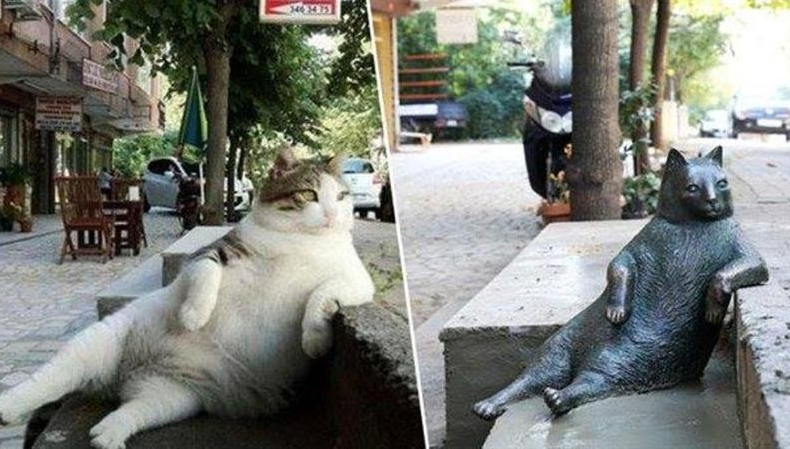
Another famous cat is Gli, the Queen of Hagia Sophia. Gli was a tabby cat with slightly cross-eyed features. Gli became the most famous cat in Turkey, guarding the former Byzantine Church of Hagia Sophia, where she entertained millions of tourists for years and lived there for 16 years.
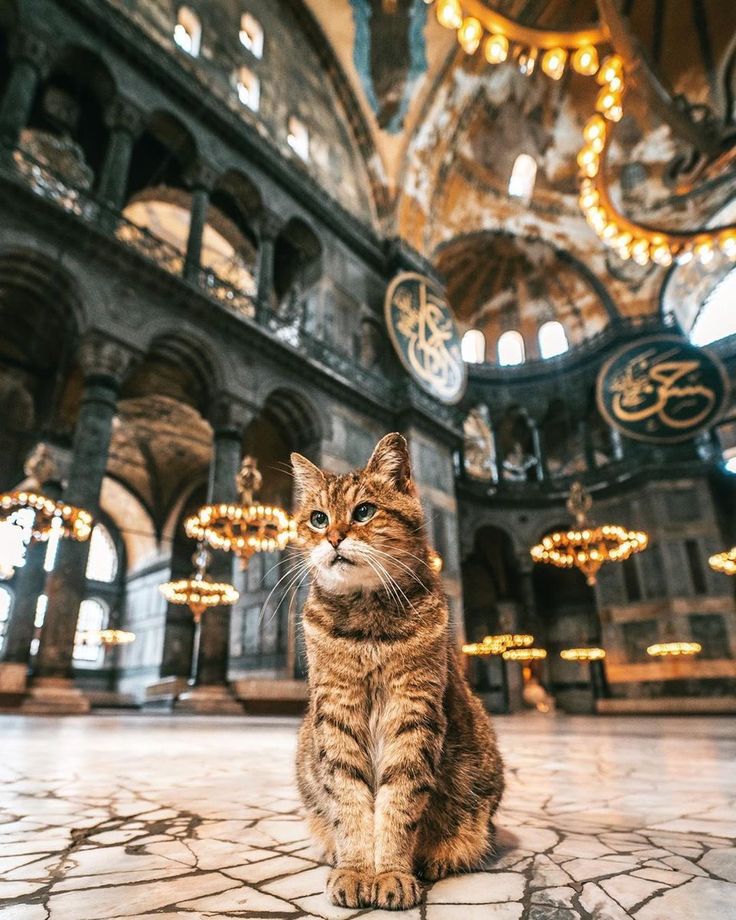
And this is the story of the citizen cats 😊
